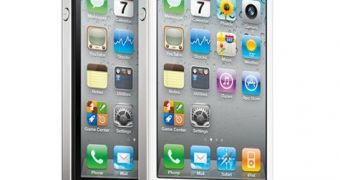Rumors regarding the availability of an iPhone model that would include support for Long Term Evolution (LTE) networks have been floating around since the first carriers announced adoption of this technology, yet it seems that enthusiasts would have to wait for a bit more for them to prove real. Cupertino-based Apple might not come to the market with a LTE-capable iPhone before the end of the ongoing year, but only in 2012, the latest reports on the matter suggest.
Following the availability of a CDMA version of the iconic device, the launch of a LTE iPhone, providing users with access to fourth-generation wireless connectivity and with enhanced download speeds, would be the next logical step for Apple.
However, since the availability of LTE networks is now yet wide, there might not be an immediate need for a LTE-capable device from Apple, although it would be nice to have one on shelves, competing against already available smartphones from HTC or Samsung.
Apparently, the company did plan to bring the new, 4G-enabled iPhone version to shelves in 2011, but issues with the LTE chip inside the device, coming from Qualcomm, determined it to postpone the release.
Various rumors that emerged last year suggested that Verizon's first iPhone model might have been a LTE device, but that did not pan out.
Moreover, now it appears that AT&T's users won't enjoy such a smartphone either in the next few months, although the carrier is reportedly on the verge of firing up its true 4G network.
The entire mobile industry is moving towards the faster 4G connectivity options, and Apple would make this step as well next year, though it remains to be seen whether no other iPhone model would arrive on shelves this year.
After all, the company accustomed us with the launch of a new device each year after the initial release, and it is expected to continue tradition.
Previous rumors claimed that the interim iPhone flavor, which should arrive on shelves during fall as iPhone 4S, would pack HSPA+ connectivity (but no LTE), while being set to hit Sprint and T-Mobile as well.
In late 2009, Apple started to put an end to the exclusivity deals carriers in various markets had, and focused on making the iPhone available for more users out there, and the release of its iconic device through these two US operators would be part of that plan.
Whether that would mean having in users hands an iPhone that sports global connectivity, it remains to be seen. Undoubtedly, such a model would be brought to the market too, most probably enhanced with 4G capabilities, though it is only something to dream of for the time being.

 14 DAY TRIAL //
14 DAY TRIAL //